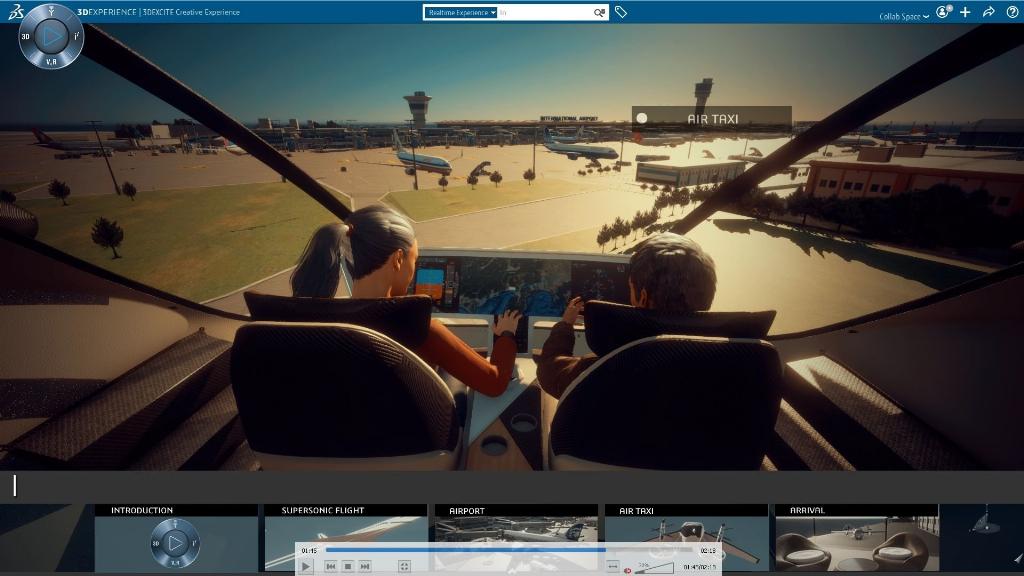Innovating airports for post pandemic resilience

Dassault Systèmes’ global affairs director, Severine Trouillet looks at how simulated airflow technology can help to restore passenger confidence, validate the efficiency and effectiveness of open ventilators and highlight potential cross-infection areas in airports.
Airports remain a key part of society’s infrastructure, but the global Covid-19 pandemic has had a massive effect on the air travel industry. With as many as 90% fewer travellers, this is putting tremendous pressure on airports to survive and establish a ‘new normal’.
As the UK works its way through the government roadmap to recovery, two challenges remain: how will airports maintain passenger confidence, and what infrastructure changes do they need to implement health and safety measures that protect the public and airport workforces?
Passenger confidence
The safety, security and health of passengers and staff remain top priorities for airports and their partners in the aviation industry. When taking this into consideration, airports need to address how they maintain passenger confidence and how these measures will be communicated to enhance consumer comfort.

The focus for airports has not changed. They will continue to power citizens’ journeys and serve as key to kick starting the economy once again. Greater flexibility, adaptability, and innovation are paramount to achieve this. Swift decision-making and stakeholder collaboration are becoming crucial factors for effective change and building confidence. To do so, airports must assess their overall experience and rethink operational models. It is not a question of ‘if’ the unexpected will happen. Instead, airport leaders need to ask themselves more practical questions: ‘when will it happen?’, ‘what will happen?’, and ‘are we prepared?’
Airports need to strategically define their operational processes to effectively conduct ‘what if’ analysis, so that they can maintain their operations if large numbers of staff become incapacitated. This is where technology can play a crucial role.
Adopting a virtual twin
A virtual or digital twin is essentially creating a fully functional digital replica of an asset, including its physical structure, its behaviour and its associated processes. This technology has been used across several industries and is well suited to support the new airport infrastructure. This technology can help to breathe life into several processes within the airport including process documentation, visualisation, and training using a business platform approach.

Virtual twin simulation capabilities mean that airports can perform virtual testing to combat situations like the Covid-19 pandemic with use cases, such as validating the efficiency and effectiveness of open ventilators. The virtual twin can also simulate the propagation and exposures of the virus to highlight potential cross-infection areas in the airport and related impacts on passengers and their surroundings.
In addition to that, virtual simulation technology can also be used to efficiently simulate airflow and virus diffusion patterns in the aircraft cabin and work with a virtual model to redesign and test safety procedures. By creating high-rendering videos to show how their procedures work, airport operations managers can communicate effectively with all stakeholders and increase passenger confidence.
Collaboration and innovation
There remains a distinct opportunity for collaboration to meet and respond to current and future challenges when it comes to airline and airport coordination. Specifically, collaboration between airports and airlines as they remain the key stakeholders involved in partnering on the overall passenger journey. By breaking down siloes of systems and processes, virtual twins enable airline and airport stakeholders to share situational awareness and coordinate action to pave a smoother future for air travel.
One of the most immediate requirements post lockdown will be the need to uphold social distancing measures to reassure passengers of their safety. Simulating distancing, passenger flows and queues in a virtual environment will allow airports to effectively monitor physical distancing (via IoT or CCTV) and inform passengers of safe airport navigation procedures. This technology will also enable airports to optimise their workforce allocation, wherever a need is greatest.
Using virtual and collaborative environments will ensure business continuity and provide financial, operational, and customer experience benefits. Embracing this will help airports to achieve their innovation and collaboration goals while keeping passengers safe, healthy re-entering an airport environment.
What is the future of airports?
In the ‘new normal’ that follows the pandemic, passenger safety needs to be built in at every stage, from design to departure and flight. While some managed to travel post second lockdown, many are still apprehensive and want further reassurance from airlines that their safety is the number one priority.
Virtual technology can be used to support this implementation and to test what-if scenarios based on simulation data and real data in the virtual world without impeding day-to-day operations.
Airports need to be prepared for whatever comes their way and technology will be instrumental in helping to prepare for this, alleviating pressures and helping to recover from the crisis. It is critical that airports leverage all means necessary to create a safe and healthy environment for their passengers and to boost the industry once again.













